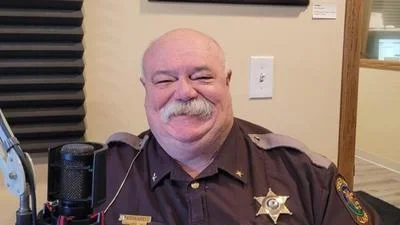History was made this fall in Monmouth College’s second-oldest men’s residence, as 16 women moved into the third floor of Graham Hall, a formerly all-male bastion.
The initiative, which involves primarily members of the women’s soccer and softball teams, developed from discussions last year among the residence life staff about creating residential communities that enhance students’ living experience on campus. Because more than half the student body participates in varsity athletics, the concept of a living-learning community for athletes was developed.
A majority of the 92 men housed on Graham’s first and second floors are also athletes, involved in baseball, basketball and other sports.
“All of the residence life student staff members are current athletes who have a personal experience balancing academics, athletics and campus leadership roles,” said Dean of Students Karen Ogorzalek. “They will serve as mentors and role models for the incoming student athletes.”
Ogorzalek said that by working with the head coach of each of the sports represented in the hall, her staff was able to place students together to reach optimal roommate success. In addition, each coach can plan or suggest programs for the residence hall staff to host.
To prepare for the new arrangement, 62-year-old building, which underwent its last major renovation in 1994, received several improvements, including a makeover of the third-floor bathroom and showers. New furniture was installed in the first- and third-floor lounges new furniture, and all the lounges have been air conditioned. A large farm table that can be used for team meals, study sessions and team bonding was added to the kitchen.
A colorful history
Graham Hall has a colorful history, dating to the 1950s when Monmouth had but one men’s dormitory — Fulton Hall, which was located across the street to the south. Spiraling male enrollment following World War II soon led to housing shortages, as there were not enough private homes in Monmouth to handle the overflow.
In early 1959, a $400,000 loan from the Federal Housing and Home Finance Agency allowed the College Senate to seek bids for a 100-bed dormitory.
Ground was broken in late February, but construction was delayed for three weeks by a statewide strike of construction workers, which dashed plans for the hall to be open by September.
In addition to the disgruntled workers, neighborhood children were not thrilled by the construction. Graham Hall was to occupy an open field which had long been known locally as the “Yale Bowl,” due to its sunken location. Bus Kellogg, whose childhood home was located on Sixth Street in front of the Yale Bowl, recalls the disappointment of losing that prime play area.
A cornerstone-laying ceremony was held at that spring’s commencement, as 84-year-old retired college physician Dr. Ralph Graham wielded a mason’s trowel to cement the stone, containing a copper box of historical memorabilia. The building would be partially named for Graham, an 1897 Monmouth graduate who had served as a college trustee for more than 30 years and who had sat on the bench of the adjacent football field for decades as both team physician and a sports fan.
“All of the residence life student staff members are current athletes who have a personal experience balancing academics, athletics and campus leadership roles. They will serve as mentors and role models for the incoming student athletes.”
– Karen Ogorzalek
The other namesake of the building was Dr. Graham’s late father, Professor Russell Graham, who had graduated from Monmouth in 1870, taught social sciences and served as both interim president and vice president. A native of Ohio who graduated from Xenia Theological Seminary, he had been pastor of the Biggsville United Presbyterian Church when called to the Monmouth professorship.
Work continued on Graham Hall throughout the remainder of 1959, including the installation of a new boiler in the College’s heating plant and a heating tunnel to serve the new building. Graham was formally dedicated at commencement the following spring, and it welcomed its first residents in September 1960.
Other uses
Throughout the 1960s, Graham Hall thrived, as did Fulton Hall and the newly constructed Gibson Hall, which resembled a Holiday Inn. But a precipitous decline in enrollment in the early 1970s would soon lead to the temporary closing of Graham and Fulton.
In 1972, a pilot program for adolescent mentally challenged students was initiated under the direction of Dr. Lee Pelham, a former member of the Monmouth College psychology department.
In 1973, Warren Achievement Center Inc. created the Adult Residential Program at Graham Hall under the direction of Dennis Brown, who during college had worked at the Illinois School for the Deaf at Jacksonville. The program was designed for persons with disabilities, ages 18-50, allowing them to live away from home while being trained to become self-sufficient and self-supporting.
Initially, about 25 residents from a 10-county area occupied the dorm, where they learned to maintain their own living space, while receiving training at Achievement Industries. By 1972, there were 40 residents, who stayed from one to three years. The College’s Saga Foods prepared meals for the residents.
Warren Achievement’s main offices were in Graham Hall, as was a mental health clinic, staffed by a registered psychologist, two master’s-level psychologists, and a certified social worker, serving residents of Warren and Henderson counties.
Also in 1974, a tri-county hot lunch program for senior citizens in Warren, Henderson and Mercer counties was initiated at Graham Hall, with bus transportation provided. After the meal, seniors would stay for fellowship, playing cards and pool or watching TV.
After a senior citizens’ center was opened in downtown Monmouth and group homes were built for Warren Achievement clients, Graham Hall gradually fell into disuse.
Returned to the students
By 1986, it was being used for storage and the north wing housed the football locker rooms. In 1991 the Black Action Affairs Council maintained a meeting room in the building.
For a time, drivers for Munson Transportation, a Monmouth-based company that operated 1,800 tractor trailers nationwide, used Graham Hall for overnight accommodations.
But finally, growing enrollments in 1994 would give Graham new life. That spring, college trustees authorized $317,000 was spent to reopen the hall as a men’s dormitory. That fall, it welcomed 73 men, with a number of double-singles reserved for male students desiring such accommodations.
Original source can be found here.




 Alerts Sign-up
Alerts Sign-up